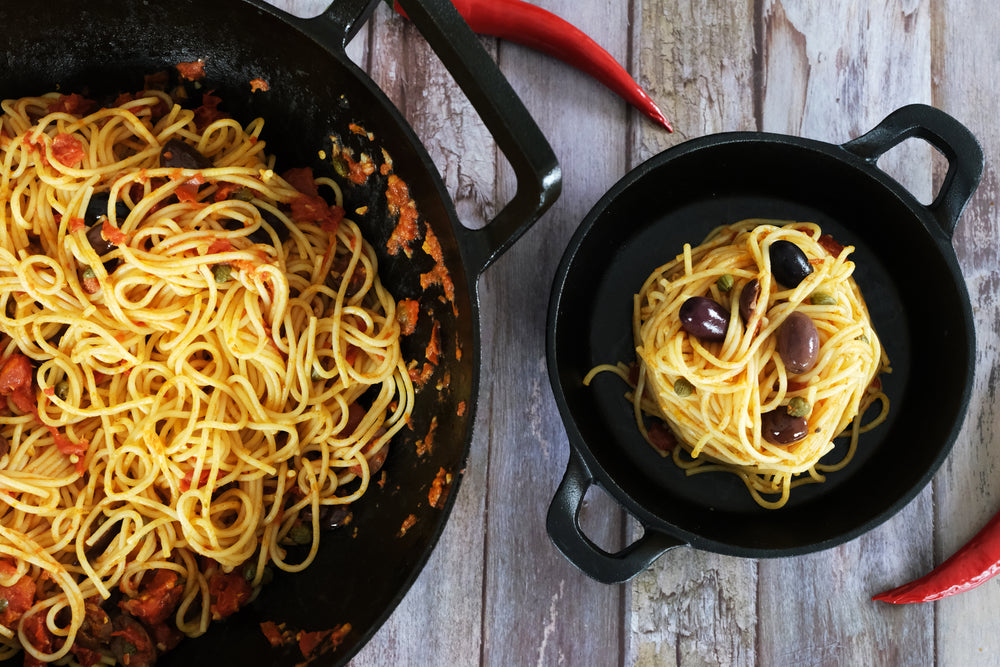Ένας Οδηγός για τα Μαγειρικά Έλαια: Τύποι, Σημεία Καπνού, Οφέλη για την Υγεία, και Περισσότερα

Το λάδι μαγειρικής είναι ένα απαραίτητο συστατικό σε πολλές κουζίνες παγκοσμίως. Προσθέτει γεύση και υφή στα πιάτα, καθώς και βοηθά στο μαγείρεμα και το τηγάνισμα του φαγητού. Ωστόσο, με τόσους πολλούς διαφορετικούς τύπους λαδιών μαγειρικής στην αγορά, μπορεί να είναι μπερδεμένο να ξέρει κανείς ποιο λάδι να χρησιμοποιήσει για ποια συνταγή. Σε αυτήν την ανάρτηση, θα συζητήσουμε τους διαφορετικούς τύπους λαδιών μαγειρικής, τα σημεία καπνίσματος, τα οφέλη για την υγεία και ποια λάδια δεν είναι υγιεινά. Θα ρίξουμε επίσης μια σύντομη ματιά στην ιστορία του λαδιού μαγειρικής.
Ιστορία του λαδιού μαγειρικής
Η χρήση των λαδιών μαγειρικής χρονολογείται χιλιάδες χρόνια πίσω. Οι αρχαίοι Έλληνες και Ρωμαίοι χρησιμοποιούσαν ελαιόλαδο για το μαγείρεμα, ενώ οι Κινέζοι και Ινδοί χρησιμοποιούσαν σησαμέλαιο και μουστάρδα. Τον 18ο και 19ο αιώνα, τα ζωικά λίπη όπως το λαρδί και το ταλλό χρησιμοποιούνταν συχνά για το μαγείρεμα.
Στον 20ό αιώνα, τα φυτικά έλαια όπως το σόγιας, το κανόλα και το ηλιέλαιο έγιναν δημοφιλή λόγω του χαμηλού κόστους και της διαθεσιμότητάς τους. Ωστόσο, οι ανησυχίες για τις επιπτώσεις στην υγεία από τα κορεσμένα και τρανς λιπαρά οδήγησαν σε στροφή προς πιο υγιεινά έλαια όπως το ελαιόλαδο και το αβοκάντο.

Τύποι λαδιών μαγειρικής
-
Ελαιόλαδο - Το ελαιόλαδο είναι ένα δημοφιλές λάδι μαγειρικής, ειδικά στη μεσογειακή κουζίνα. Είναι πλούσιο σε μονοακόρεστα λιπαρά οξέα, τα οποία θεωρούνται ωφέλιμα για την υγεία της καρδιάς. Το παρθένο ελαιόλαδο είναι ο πιο γευστικός και υγιεινός τύπος ελαιολάδου. Είναι καλύτερο να χρησιμοποιείται για να περιχύνετε σαλάτες, πιάτα με ζυμαρικά και λαχανικά.
-
Λάδι Κανόλα - Το λάδι κανόλα είναι ένα ουδέτερης γεύσης λάδι που παράγεται από το φυτό της ραπής. Είναι πλούσιο σε μονοακόρεστα και πολυακόρεστα λιπαρά και έχει υψηλό σημείο καπνίσματος, καθιστώντας το κατάλληλο για μαγείρεμα σε υψηλές θερμοκρασίες, όπως τηγάνισμα και ψήσιμο.
-
Λάδι Καρύδας - Το λάδι καρύδας είναι ένα τροπικό λάδι που παράγεται από τη σάρκα ώριμων καρύδων. Είναι πλούσιο σε κορεσμένα λιπαρά, γεγονός που το καθιστά στερεό σε θερμοκρασία δωματίου. Το λάδι καρύδας έχει διακριτική γεύση και άρωμα και είναι καλύτερο για ψήσιμο, τηγάνισμα και σοτάρισμα.
-
Λάδι Αβοκάντο - Το λάδι αβοκάντο είναι πλούσιο σε μονοακόρεστα λιπαρά και έχει υψηλό σημείο καπνίσματος, καθιστώντας το ιδανικό για μαγείρεμα σε υψηλές θερμοκρασίες. Έχει ήπια, ξηροκάρπικη γεύση και είναι καλύτερο για ψήσιμο στη σχάρα, ψητό και σοτάρισμα.
-
Ηλιέλαιο - Το ηλιέλαιο είναι ένα ουδέτερης γεύσης λάδι που παράγεται από σπόρους ηλίανθου. Είναι πλούσιο σε πολυακόρεστα λιπαρά και έχει υψηλό σημείο καπνίσματος, καθιστώντας το κατάλληλο για τηγάνισμα και ψήσιμο.
Σημεία Καπνίσματος
Το σημείο καπνίσματος ενός ελαίου είναι η θερμοκρασία στην οποία αρχίζει να καπνίζει και να διασπάται, απελευθερώνοντας επιβλαβείς ενώσεις και παράγοντας δυσάρεστη γεύση και οσμή. Είναι απαραίτητο να επιλέγεται το σωστό λάδι για τη μέθοδο μαγειρέματος ώστε να αποφεύγεται το κάπνισμα και το κάψιμο του ελαίου.
| Τύπος Ελαίου | Σημείο Καπνίσματος (°F) |
|---|---|
| Ελαιόλαδο | 375-420 |
| Λάδι Κανόλα | 400-450 |
| Λάδι Καρύδας | 350-375 |
| Έλαιο Αβοκάντο | 520-570 |
| Ηλιέλαιο | 440-450 |
Οφέλη για την Υγεία
Τα μαγειρικά έλαια μπορούν να προσφέρουν πολλά οφέλη για την υγεία όταν χρησιμοποιούνται με μέτρο και ως μέρος μιας υγιεινής διατροφής. Τα οφέλη για την υγεία κάθε ελαίου διαφέρουν ανάλογα με τη σύσταση των λιπαρών και το περιεχόμενο θρεπτικών ουσιών.
Το ελαιόλαδο είναι πλούσιο σε μονοακόρεστα λιπαρά, που έχουν συνδεθεί με τη μείωση του κινδύνου καρδιακών παθήσεων, τη μείωση των επιπέδων χοληστερόλης και τη βελτίωση της ευαισθησίας στην ινσουλίνη.
Το λάδι κανόλα είναι καλή πηγή ωμέγα-3 και ωμέγα-6 λιπαρών οξέων, που είναι απαραίτητα για την υγεία του εγκεφάλου και τη μείωση της φλεγμονής στο σώμα.
Το λάδι καρύδας περιέχει λαουρικό οξύ, το οποίο έχει αποδειχθεί ότι βελτιώνει τα επίπεδα χοληστερόλης και ενισχύει τη λειτουργία του εγκεφάλου. Ωστόσο, είναι επίσης πλούσιο σε κορεσμένα λιπαρά, που μπορούν να αυξήσουν τον κίνδυνο καρδιακών παθήσεων όταν καταναλώνονται σε υπερβολή.
Το αβοκάντο είναι πλούσιο σε μονοακόρεστα λιπαρά και βιταμίνη Ε, που έχουν συνδεθεί με τη μείωση της φλεγμονής, τη βελτίωση της καρδιακής υγείας και την πρόληψη του καρκίνου.
Το ηλιέλαιο είναι πλούσιο σε πολυακόρεστα λιπαρά, τα οποία μπορούν να βοηθήσουν στη μείωση των επιπέδων χοληστερόλης και στη μείωση της φλεγμονής στο σώμα.

Ανθυγιεινά Έλαια
Ορισμένα μαγειρικά έλαια δεν είναι υγιεινά και θα πρέπει να αποφεύγονται ή να καταναλώνονται με μέτρο. Αυτά τα έλαια είναι πλούσια σε κορεσμένα και τρανς λιπαρά, τα οποία μπορούν να αυξήσουν τον κίνδυνο καρδιακών παθήσεων και άλλων προβλημάτων υγείας.
Το φοινικέλαιο είναι πλούσιο σε κορεσμένα λιπαρά και έχει συνδεθεί με αποψίλωση δασών και περιβαλλοντικά ζητήματα λόγω της παραγωγής του. Βρίσκεται συχνά σε επεξεργασμένα τρόφιμα και πρέπει να καταναλώνεται με μέτρο.
Το σπορέλαιο σόγιας είναι πλούσιο σε πολυακόρεστα λιπαρά αλλά περιέχει επίσης ωμέγα-6 λιπαρά οξέα, τα οποία μπορούν να προκαλέσουν φλεγμονή στο σώμα όταν καταναλώνονται σε υπερβολή. Χρησιμοποιείται συχνά σε επεξεργασμένα τρόφιμα και πρέπει να καταναλώνεται με μέτρο.
Το καλαμποκέλαιο είναι πλούσιο σε πολυακόρεστα λιπαρά αλλά περιέχει επίσης ωμέγα-6 λιπαρά οξέα. Χρησιμοποιείται συχνά σε επεξεργασμένα τρόφιμα και πρέπει να καταναλώνεται με μέτρο.
Ποιο λάδι να χρησιμοποιήσετε με σαλάτα
Όταν πρόκειται για τη χρήση λαδιού ως ντρέσινγκ σαλάτας ή για άλλες εφαρμογές χωρίς θέρμανση, η γεύση γίνεται πιο σημαντικός παράγοντας από το σημείο καπνού. Εδώ είναι μερικά λάδια που είναι εξαιρετικά για ντρέσινγκ σαλάτας:
-
Εξαιρετικό παρθένο ελαιόλαδο - Αυτό είναι ένα από τα πιο δημοφιλή λάδια για ντρέσινγκ σαλάτας λόγω της φρουτώδους γεύσης και των οφελών για την υγεία. Είναι καλύτερο να χρησιμοποιείται για να περιχύνετε σαλάτες, πιάτα με ζυμαρικά και λαχανικά.
-
Λάδι αβοκάντο - Αυτό το λάδι έχει ήπια, ξηροκάρπικη γεύση και υψηλό σημείο καπνού, καθιστώντας το ιδανικό για ψήσιμο στη σχάρα, ψήσιμο στο φούρνο και σοτάρισμα. Είναι επίσης εξαιρετικό για ντρέσινγκ σαλάτας.
-
Λάδι καρυδιού - Αυτό το λάδι έχει πλούσια, ξηροκάρπικη γεύση που ταιριάζει καλά σε ντρέσινγκ σαλάτας. Είναι πλούσιο σε ωμέγα-3 λιπαρά οξέα και αντιοξειδωτικά.
-
Λάδι λιναρόσπορου - Αυτό το λάδι είναι πλούσιο σε ωμέγα-3 λιπαρά οξέα και έχει ξηροκάρπικη γεύση. Είναι καλύτερο να χρησιμοποιείται σε μικρές ποσότητες σε ντρέσινγκ σαλάτας, καθώς έχει χαμηλό σημείο καπνού και μπορεί να γίνει πικρό όταν θερμαίνεται.
-
Λάδι σησαμιού - Αυτό το λάδι έχει μια χαρακτηριστική ξηροκάρπικη γεύση και χρησιμοποιείται συχνά στις ασιατικές κουζίνες. Είναι καλύτερο να χρησιμοποιείται σε μικρές ποσότητες σε ντρέσινγκ σαλάτας, καθώς έχει χαμηλό σημείο καπνού και μπορεί να γίνει υπερβολικό σε μεγάλες ποσότητες.
Όταν φτιάχνετε ένα ντρέσινγκ σαλάτας, είναι σημαντικό να ισορροπήσετε το λάδι με οξύ (όπως ξύδι ή χυμό λεμονιού) και άλλα καρυκεύματα (όπως αλάτι και πιπέρι) για να δημιουργήσετε μια αρμονική γεύση. Η χρήση ενός λαδιού υψηλής ποιότητας θα βοηθήσει να αναβαθμίσετε τη γεύση της σαλάτας σας και να την κάνετε πιο απολαυστική.
Όσον αφορά τις σαλάτες, κάποιοι προτιμούν να χρησιμοποιούν ελαφρύτερα λάδια όπως το λάδι από σπόρους σταφυλιού, το λάδι κανόλα ή το ηλιέλαιο. Αυτά τα λάδια έχουν ουδέτερη γεύση και δεν θα υπερκαλύψουν τα άλλα συστατικά της σαλάτας. Ωστόσο, δεν είναι τόσο πλούσια σε θρεπτικά συστατικά όσο κάποια από τα άλλα λάδια που αναφέρθηκαν παραπάνω.
Τελικά, το καλύτερο λάδι για το ντρέσινγκ της σαλάτας σας θα εξαρτηθεί από τις προσωπικές σας προτιμήσεις και το γευστικό προφίλ που προσπαθείτε να πετύχετε. Πειραματιστείτε με διαφορετικά λάδια και βρείτε αυτά που λειτουργούν καλύτερα για εσάς. Ένα καλό ντρέσινγκ σαλάτας μπορεί να μετατρέψει μια απλή σαλάτα σε ένα νόστιμο και ικανοποιητικό γεύμα.

Συμπερασματικά, η επιλογή του σωστού λαδιού μαγειρέματος είναι απαραίτητη τόσο για τη γεύση όσο και για την υγεία. Είναι σημαντικό να λαμβάνετε υπόψη το σημείο καπνού, τη σύνθεση λιπαρών και το περιεχόμενο θρεπτικών συστατικών κάθε λαδιού όταν επιλέγετε ποιο λάδι θα χρησιμοποιήσετε για κάθε συνταγή. Η χρήση διαφόρων υγιεινών λαδιών με μέτρο μπορεί να προσφέρει πολλά οφέλη για την υγεία και να ενισχύσει τη γεύση των πιάτων σας.
















Αφήστε ένα σχόλιο